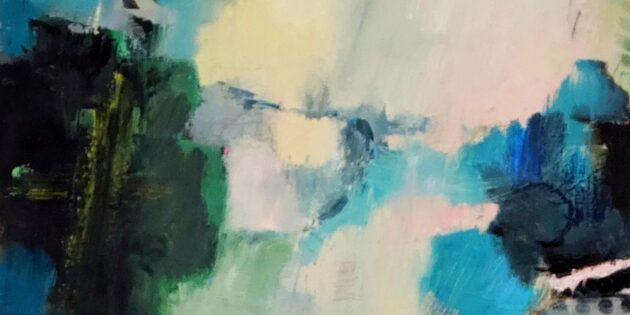Behind the scenes with the Artist: what makes us tick, what makes us hide
VULNERABILITY
The first two newsletters talked about Intuition and Self-Confidence, two of the very important elements in our practice as artists. We strive to be confident, trusting in ourselves and relying on our intuition without reservations.
Some of us put up a façade of strength and self-reliance, conveying an image of someone who can create easily or, at least, without the interference of a disrupting Daemon. Maybe theirs is not a façade and they are among those who have fought and won or maybe never had to fight. Some people are born with a golden brush in their little fingers.
But we all know that so very often we protect ourselves by hiding our fears from colleagues, fellow artists and family. Our fears span the color wheel: we’re not good enough, we’re a fraud, our technique is not the best, we cannot draw well or our color mixing is terrible. You pick the fear: there’s no end to the list we artist create.
I have come to understand that recognizing the screens or walls we hide behind and tearing them down – in the right measure, at the right time, with the right person or at the right endeavor – will improve our authentic expression and emotional connection not only with ourselves, first and foremost, but with our collectors, colleagues, family and friends.
I grew up in an environment that was not conducive to a feeling of safety. I was not nurtured, emotionally protected, shown that I was a good child, supported, etc. Growing up, I felt I had to take charge and control everything to protect myself, to feel safe. Life was a tight rope and I must not fall. The word “vulnerable” did not exist in my vocabulary. And if it did, it would not apply to me because I had seen what happened to people I loved who were vulnerable. All of this was unconscious, of course.
How many of us, artists, consciously embrace vulnerability What are the difficulties in doing so?
- We fear criticism and rejection.
- People/audiences may misinterpret the intentions or messages behind our work, leading to feelings of being misunderstood or misrepresented.
- The emotional exposure in showing vulnerability can feel like exposing a wound to the world.
- Being really seen and then feeling shame for not being understood and accepted.
-Professionally there’s a concern that work that reflects some of our vulnerabilities might not be commercially viable or popular, potentially impacting our livelihood.
-Artists might also worry that being too vulnerable could affect how we are perceived in our professional community, possibly being seen as less serious or too emotional.
Clearly, as an artist, for many years I did not understand what vulnerability was, and its importance in creating authentic work. Until about two years ago this word had no room in my studio. Not because I did not invite it but because I did not understand this process, its importance and its utter necessity.
Embracing vulnerability does not mean going haywire or having no control over what we produce. Embracing vulnerability means self acceptance, self love, self understanding.
Some of the advantages of embracing vulnerability are:
- Authentic Expression – it allows us to create more genuine work, which projects and reflects who we are, what we seek to impart, our true message. Ironically to those of us who shun this “frailty”, this kind of vulnerability resonates more deeply with audiences who find parts of themselves in us even they cannot express it.
- Feelings are universal and when we offer our hand, more often than not someone will hold it.
- Audiences often connect more strongly with work that feels real and honest, as it reflects shared human experiences and emotions.
Vulnerable art can foster empathy and solidarity, helping others feel less alone in their experiences. Audiences may not be able to pin down why a painting touches them; most probably they will not stop and analyze what they are feeling when seeing our work. But it will move them because they see parts of themselves in our expression, or because they feel the courage it took to show it.
It took me many years of self-work, much effort and dedication to finally come to a place where I allow myself to express parts of me that need to see the light of day, that want to be acknowledged. Is it easy? Not always. Do I always know how to express it? Certainly not. Do I always succeed, even when willing, eager, able to create authentic work? Pitifully not. But every day I feel that a baby step has been taken, the confidence of showing myself as I am in that moment gets stronger. Some days I even tell myself I don’t care what anyone thinks of what I am creating. Those are the best days – when I feel truly free to say to my inner Daemon: take it or leave it!
Being willing to express what we love, what we need to show, often leads to more nuanced and complex work, as it draws from the depths of personal experiences and emotions. Being willing to show ourselves through our work pushes us to take creative risks, which is not always easy but always important and enriching. If we don’t risk, we will never experience the richness, joys, confidence and self-acceptance that this brings us.
When facing your canvas, sculpture, music sheet, empty page, or whichever medium you express yourself in, I gently urge you to invite your whole, real self to collaborate with you. You will not have a better friend.
